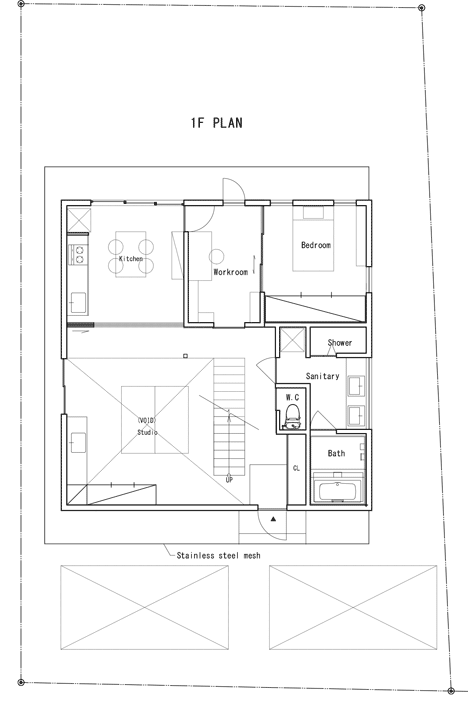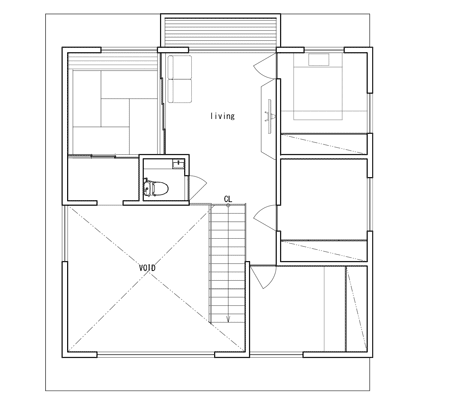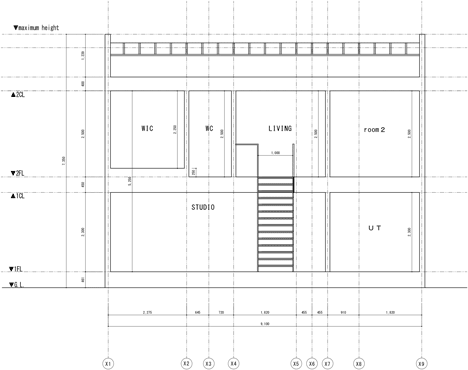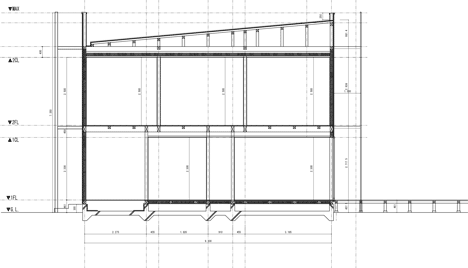Metal mesh shrouds Fumihiko Sano's MoyaMoya house
Layers of fine stainless steel mesh envelop this house in Tokyo by local architect Fumihiko Sano, making it look like it is wrapped in gauzy fabric (+ slideshow).
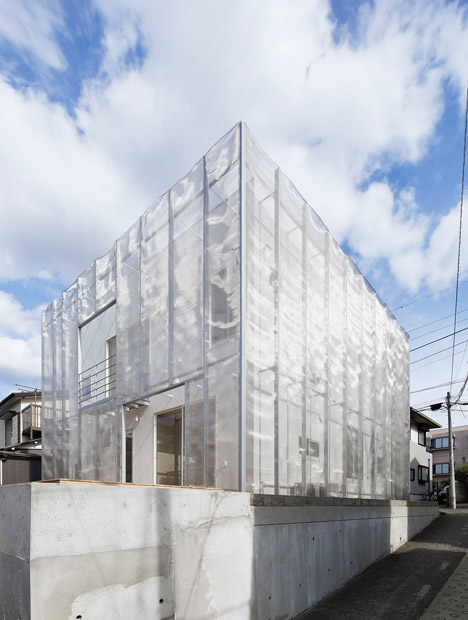
Fumihiko Sano of architecture studio Phenomenon designed the MoyaMoya house in Tokyo's Higashikurume suburb. Constructed around a large double-height studio, it was built for a female client who needed space for her hobby of dyeing kimonos.
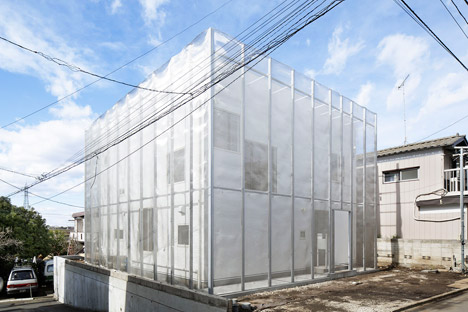
The architect added a metal framework around three sides of the building, then covered it in metal mesh to restrict views of the interior from surrounding residences.
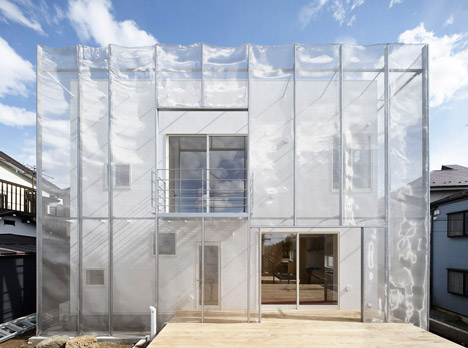
Two layers of the finely perforated and flexible material create a moire effect that gives the illusion of movement. This is enhanced when the mesh billows in the wind, causing reflections to ripple across the surface.
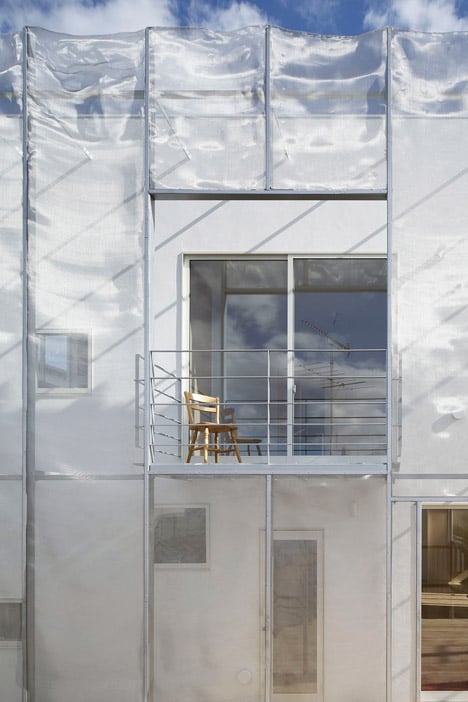
Changing light conditions throughout the day and the seasons also alter the appearance of the mesh box.
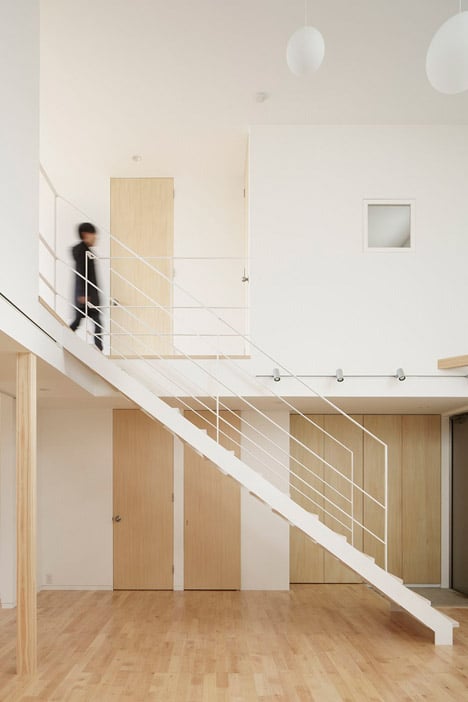
Openings in the framework are positioned in front of entrances and some windows, including a full-height glazed door on the first floor that leads onto a balcony suspended between the main wall and the external structure.
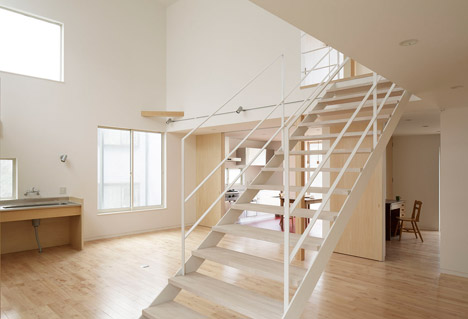
An entrance faces a small piece of land designated for parking. This leads into the double-height central room, which features the large sink and storage space required for the dyeing process.
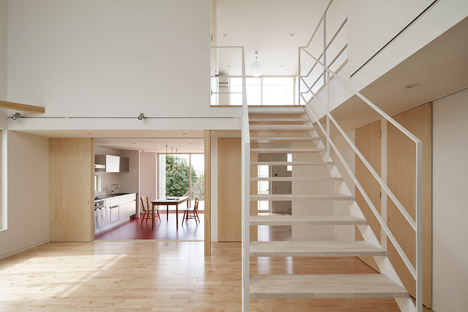
Windows at different heights fill this area with natural light and sliding doors can be pulled back to connect it with the kitchen and dining section of the house, and a small study.
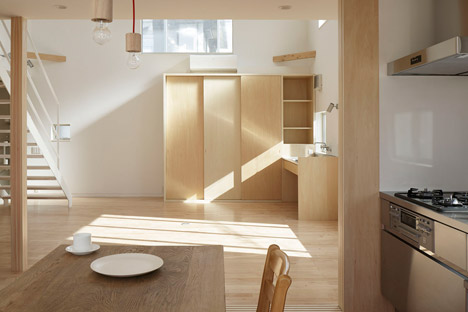
Closets are built into the wall next to the entrance, while a toilet and bathroom can be accessed from the studio. Sliding doors in the study lead to the owner's bedroom.
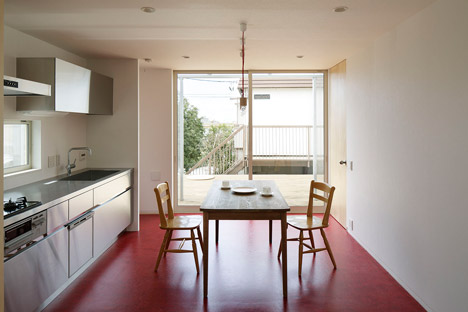
A staircase that ascends to the upper storey features simple white banisters and open treads that minimise its presence in the space.
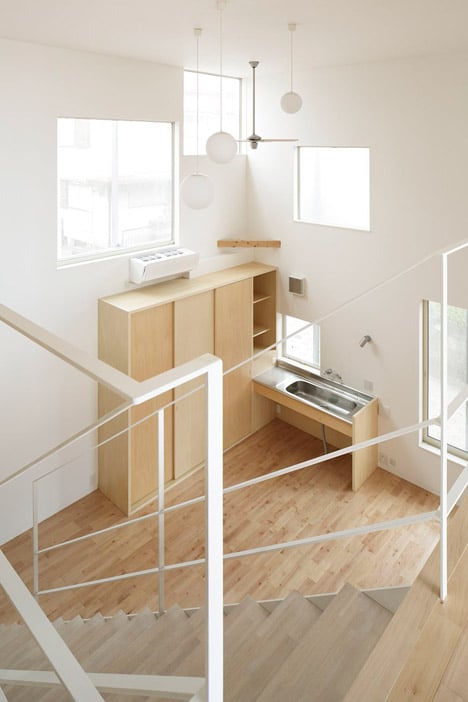
The large landing is intended as a living area and is flanked by a traditional tatami space and a bedroom.
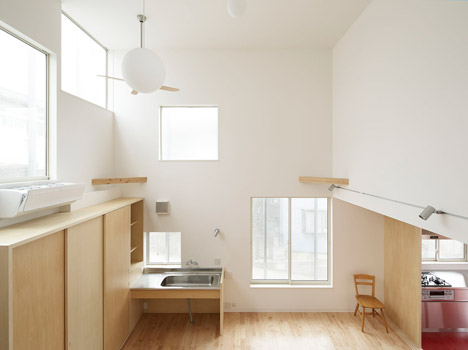
A small bathroom and spare bedrooms are located on the first floor, and are expected to accommodate foreign students when the owner's children have left home.
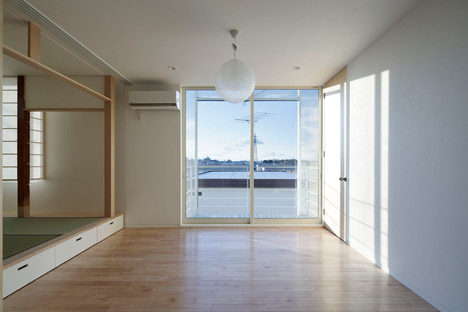
Photography is by Daisuke Shimokawa/Nacasa & Partners.
Here's a project description from Fumihiko Sano:
MoyaMoya
This is the residence in the commuter town in the suburb of Tokyo.

We constructed the studio where our client could study and dye kimonos, her chief hobby, as the centre of the house; also, we tried to provide the place to communicate and interact, accepting foreign students after her kids leave the home.
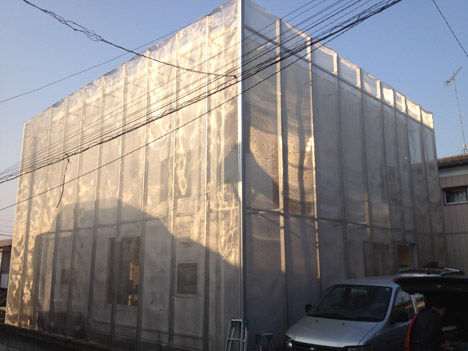
The shape of the building plot is a huge square (9100*9100), and it slopes and spreads north and south. Because of the slating ground, a private space was settled in the northern part commanding a fine view. An open ceiling studio is connected to a kitchen, so that allows the client to have a big party as she desires.
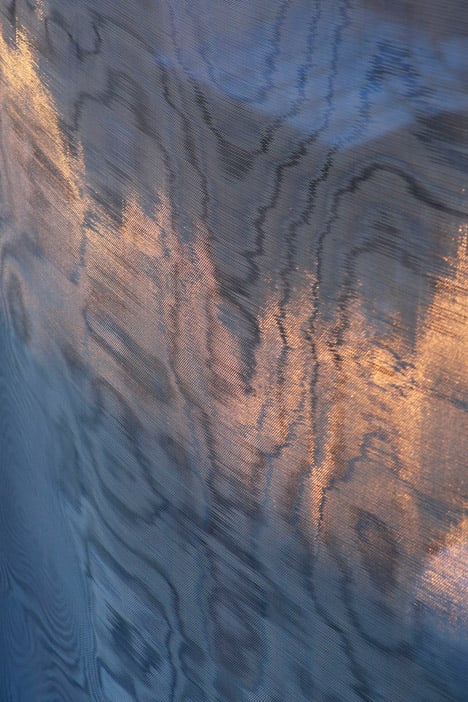
Considering when she ages in the future, her bedroom, a study room, and other infrastructures are placed on the first floor. Other single rooms, a living room, and a Japanese style room are on the second floor; moreover, you can enjoy a fine prospect with Mt. Fuji from the living room.
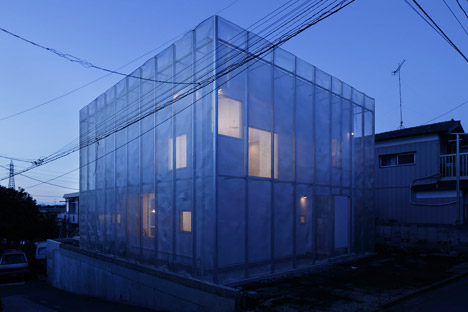
When we look at this project from a different perspective, the most significant characteristic of this construction is the stainless steel fence which surrounds the building. By creating the space which makes the border between the inside and the outside of the building vague, the inside thereof is difficult to see from the outside. In terms of security, significant effects can be also expected.
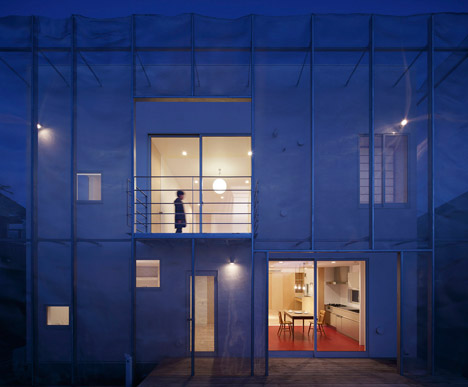
A moire pattern is generated since the stainless steel is doubled, and it makes people feel as if they are in the inside even if they are in the outside.
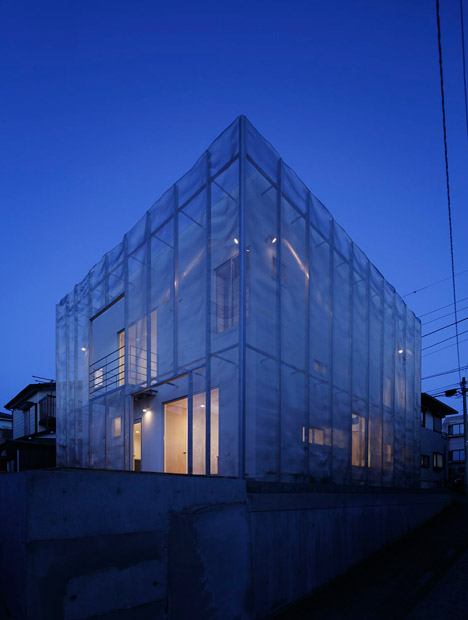
Being swayed by the wind, the stainless steel fence shines and causes a great variety of the moire patterns. The angle and strength of the light are certainly changed by time – morning, afternoon, evening, and night. The change of the light creates not only gripping moire patterns, but also gives different and diverse impressions to the house. This is the place where people can closely enjoy the transitions of time, seasons, and climates through the house.
Location: Higashikurume, Tokyo, Japan
